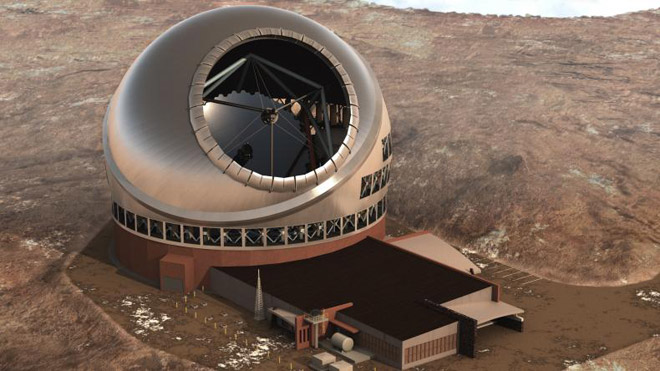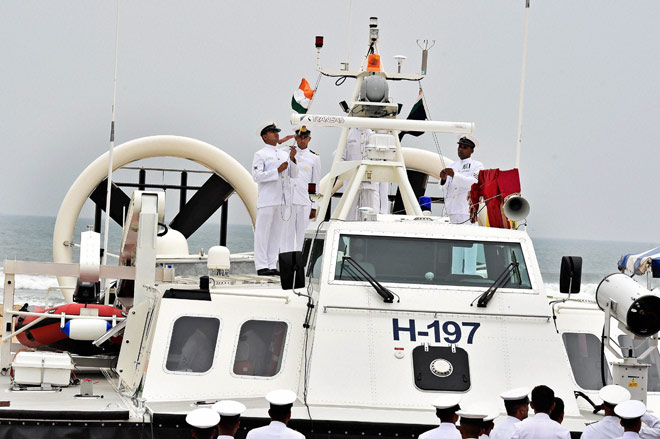
An artist concept illustrating the TMT Observatory at the proposed site on Mauna Kea. Photo: Courtesy TMT Observatory Corporation.
WASHINGTON (PTI): The construction of ambitious next-generation Thirty Meter Telescope, to be built at an estimated cost of USD 1.47 billion by an international consortium consisting of institutions from India, the US, Canada, Japan and China, has begun this week in Hawaii.
The gigantic telescope, scheduled to be ready by 2020, will provide astronomers with unparalleled power to observe the intricacies of the universe from the comfort of Earth.
India is a significant partner in this ambitious international project, which would enable scientists to answer some of the most fundamental questions in modern science.
Last month, the Union Cabinet chaired by Prime Minister Narendra Modi had given its approval for India's participation in the Thirty Meter Telescope (TMT) Project at Mauna Kea, Hawaii, USA at a total cost of Rs 1299.8 crores from 2014-23.
The project is an international consortium consisting of institutions from the USA, Canada, Japan, India and China.
From India side, this will be a joint project of the Department of Science and Technology (DST) and the Department of Atomic Energy (DAE).
With its contributions, India will be a 10 per cent partner in the project and 70 per cent of its contributions will be "in kind". This will translate into 25 to 30 observing nights on the telescope for Indian scientists per year.
The TMT will enable scientists to study fainter objects far away from us in the Universe, which will give information about early stages of the evolution of the Universe.
It will also give finer details of not-so-far-away objects such as undiscovered planets and other objects in the Solar System and planets around other stars.
This partnership will also enhance India's technological capabilities in high-technology areas such as primary mirror segment figuring and polishing, mirror support system and edge sensor assembly and testing, software for observatory controls, data analysis pipelines, adaptive optics techniques.
The TMT will be one of the largest optical-infrared telescopes to come up in the next decade. Its 30 meter diameter primary mirror will consist of 492 segments of 1.44 meter diameter each.
These mirror segments will be cleverly positioned relative to each other through sophisticated sensors, actuators and control systems, so that the entire assembly behaves like a single monolithic mirror.
From the Indian side, the project would be led by Indian Institute of Astrophysics (IIA) Bangalore, with the help of Aryabhatta Research Institute of Observational Sciences (ARIES), Nainital and Inter-University Centre for Astronomy and Astrophysics (IUCAA), Pune.
 Previous Article
Previous Article Next Article
Next Article













The Indian Air Force, in its flight trials evaluation report submitted before the Defence Ministry l..
view articleAn insight into the Medium Multi-Role Combat Aircraft competition...
view articleSky enthusiasts can now spot the International Space Station (ISS) commanded by Indian-American astr..
view article